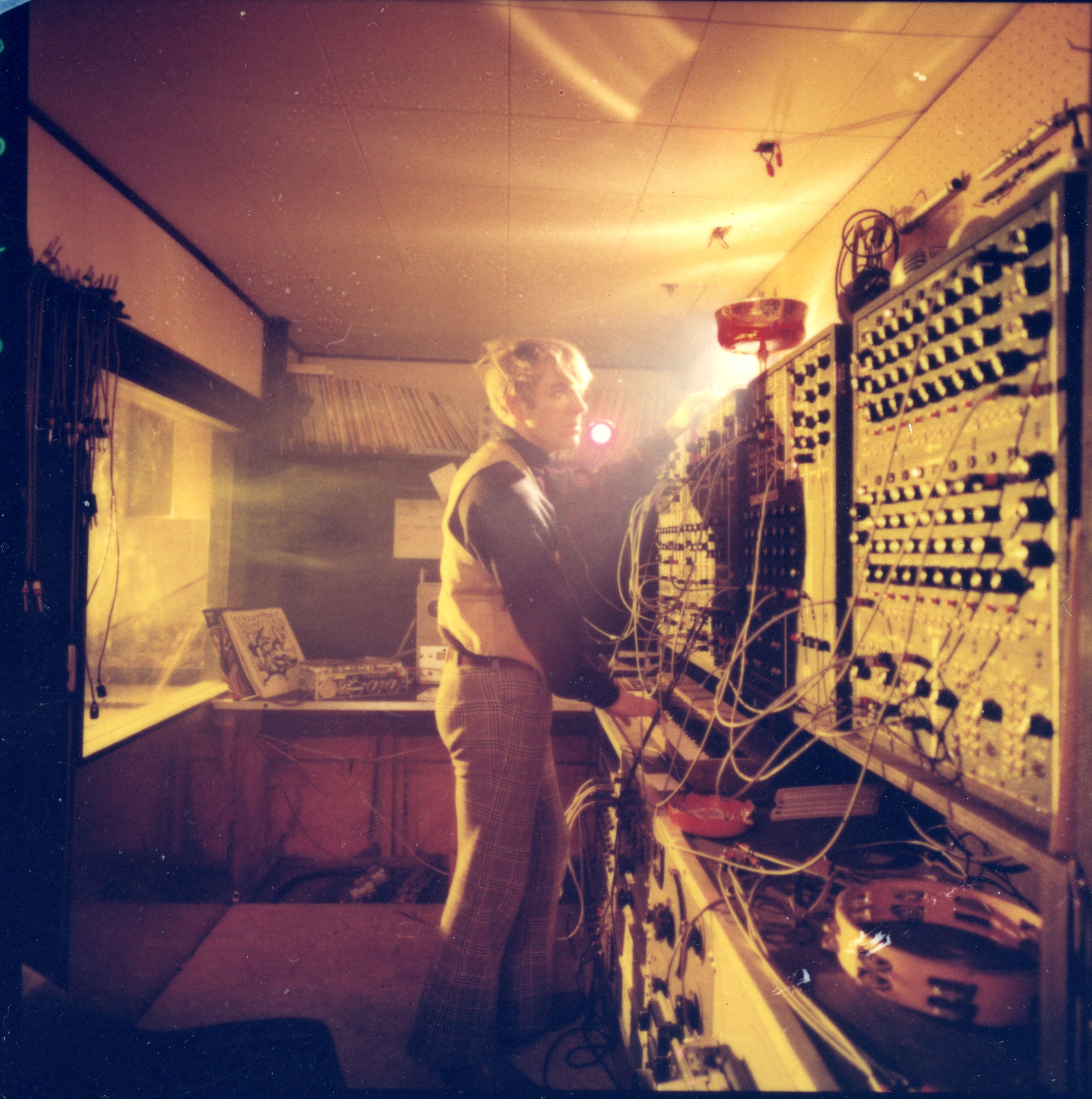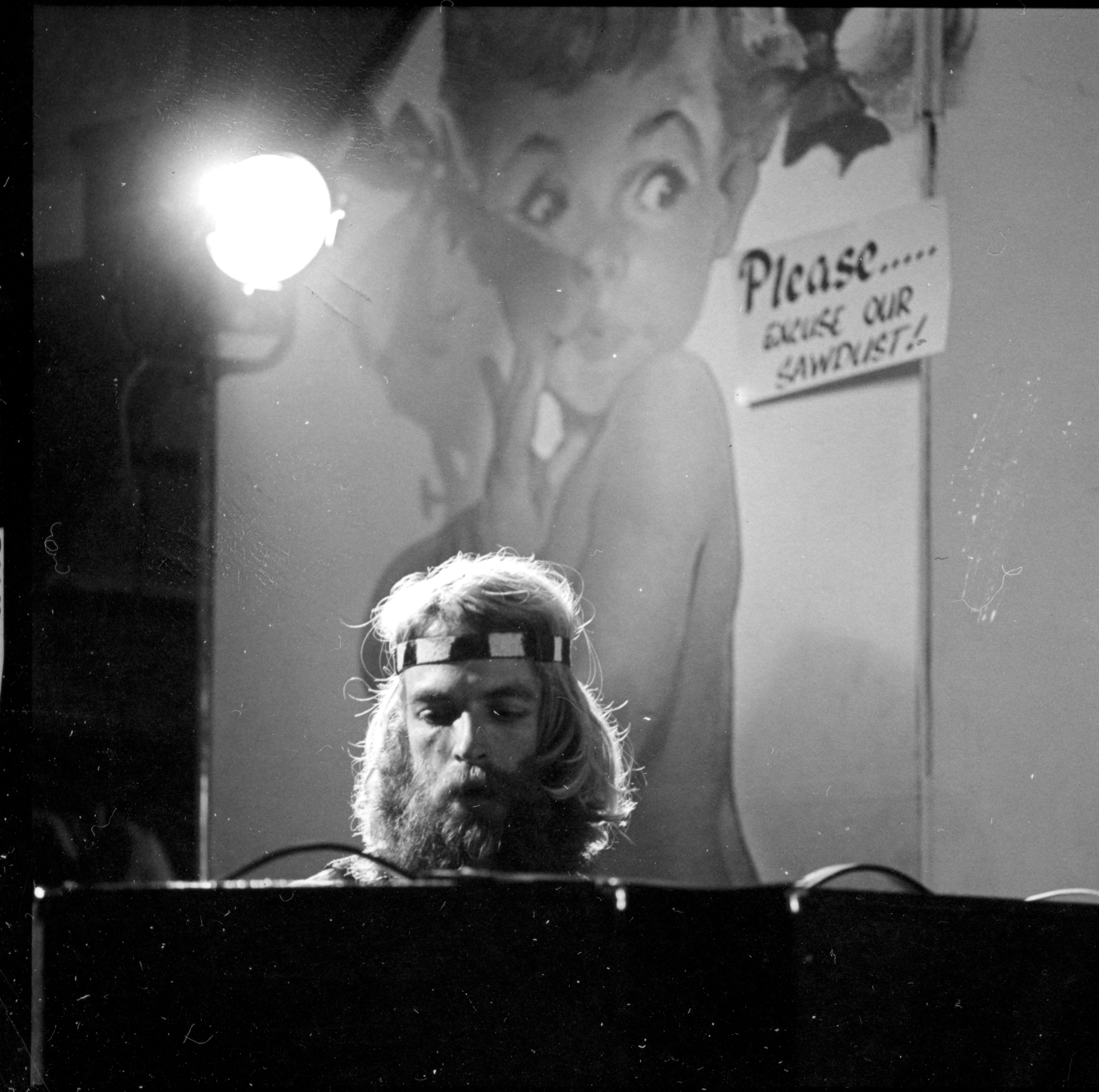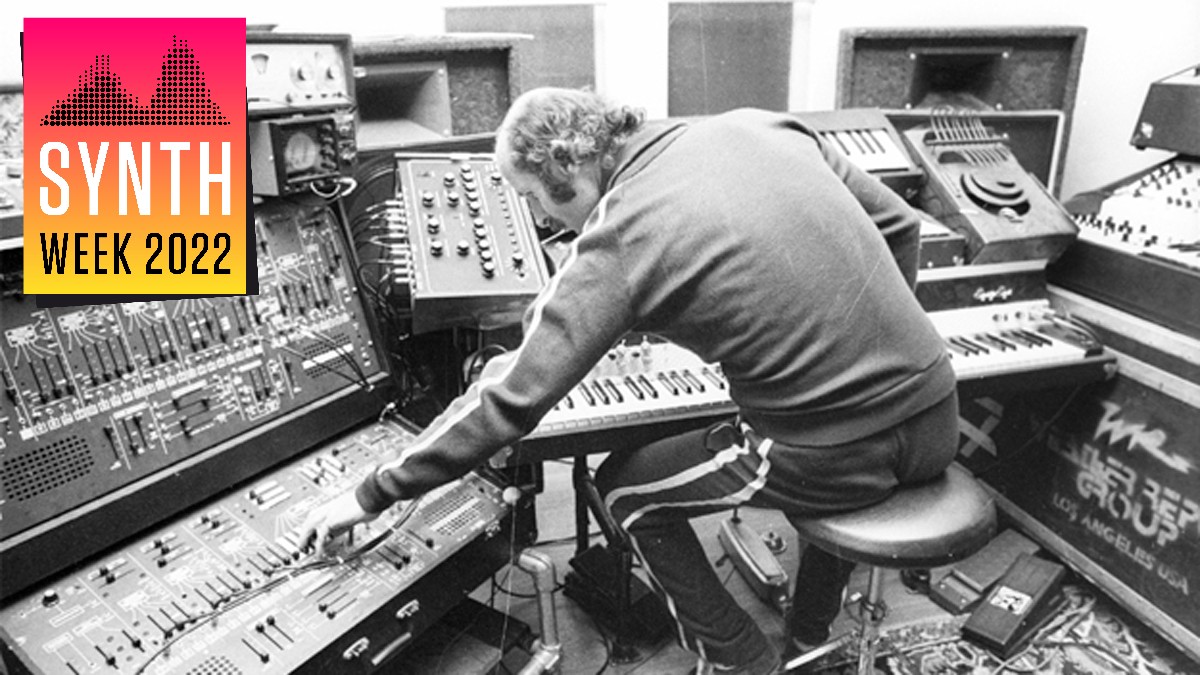
“I was in another world for a while there,” says synth trailblazer Doug McKechnie when picking up the phone. “But now I’m back…”
It’s a fitting and mysterious opening to an illuminating conversation uncovering Doug’s secret musical history as an experimental, acid-loving musician. He may have made his first creative forays with a Moog synthesizer during the late sixties, but his name has only recently been revealed to the wider world, following the release of two collections of archived material by VG+ Records.
Doug’s early experiments place him among the first purveyors of the instrument and his colourful story adds a new psychedelic strand to electronic music’s historical narrative.
“About 20 years ago, I thought that I would only be heard of after I was dead but fortunately, VG+ Records have come along and forced my hand,” he laughs. “It’s amazing at my tender age of 81 to be discovered.”
Doug is exploring his past from a sun-dappled porch at his home in the Bay Area. It’s in this part of the world where he’s spent much of his life, experimenting with music and technology, twin passions that have sustained him for the best part of 60 years.
The two compilations, San Francisco Moog: 1968-72 Vol. 1 and Vol. 2, are fascinating sonic documents that have been collated in the recently released collection The Complete San Francisco Moog: 1968-72. While this music is decades old, Doug’s still very much attuned to the present and the future.
“The next 15 years in sound development is going to be extraordinary,” he predicts. “We’ll be doing surgery and repairing tissue with sound, the whole aspect of waveform manipulation has yet to be really explored. As I’ve always said, all things manifest in waveforms.”

So how did Doug McKechnie become one of the first to use the Moog synthesizer? Serendipity, alongside an ability to connect with people and a deep-found love of experimentation are all defining parts of his story.
In the wake of the Vietnam War and a marriage he’d unsuccessfully used to try and evade conscription, Doug ended up in San Francisco with access to a floor of a building at 759 Harrison Street. He advertised for someone to join him in the space and ended up meeting Bruce Hatch, the son of a wealthy capitalist and electrical engineer, who invested in a Moog Modular Series III synthesizer shortly after moving in. One of the first ever made, the instrument's serial number was 004.
“Bruce phoned his dad and said he wanted this synth, then three weeks later these big boxes with the kit inside showed up,” recalls Doug. “When I saw it, he explained what it did and I realised that it was such an incredible instrument. Within six weeks I was lecturing in schools about it, and creating all these sounds.”
Bruce’s had planned to set up his own sound equipment business but he was not a musician, and Doug found himself drawn to extracting sounds from it instead. Many of those early experiments were recorded by Doug and have found their way from his archive on to the recently unveiled compilations.
In the words accompanying the release, VG+ Records talks of Doug’s influence on Tangerine Dream, particularly as the synth itself was eventually sold to Christopher Franke from the band in 1972. Originally, the Byrds were supposed to buy the piece of kit but the deal ultimately fell through, meaning it found its way to the German music-makers instead.
PJ Dorsey, AKA Tarotplane, was an artist working with VG+ Records who first discovered Doug’s music while digging online. He believes that Doug was the first music-maker to use a sequencer in the way that paved the way for modern electronic musicians.
“The Berlin school/Tangerine Dream style was heralded as a breakthrough because of the repetitious pattern-based style,” he says. “Tangerine Dream are thought to have invented this approach, but it was actually Doug. But no one really knew, since Doug never put out any albums and you would have needed to hear him in person and understand what you were hearing to realize.”
Doug's Moog had two 24-step sequencers, nine oscillators, a ribbon controller and a keyboard. Generating melodic patterns with the sequencers and keyboard, Doug ran these through the Moog's three sets of oscillators to create vibrant, kaleidoscopic synth music.
“I would use the ribbon controller to control the low pass and a switch for the high pass, and that meant I could really articulate and change the timbre of the pitches,” Doug explains. “Technically, I had no understanding of electronic music or electronics. The instrument dictated where we went.”
Doug’s groundbreaking approach to generating sound with the synthesizer was based on a simple premise - he compared it to the insides of a person’s mouth.
The vocal cords were oscillators, the envelope generators were your lips and tongue, and the high and low pass filter made up your mouth’s interior
“The vocal cords were oscillators, the envelope generators were your lips and tongue, and the high and low pass filter made up your mouth’s interior,” he explains. “I explained to people that they could use it to make a sound in the same way as your mouth.”
His ingenious approach is best heard on these recently released collections, full of unique sounds. Tracks like Meditation Moog 1968 and Crazy Ray sound raw yet stand as futuristic foundations of the electronica that was to follow. Doug recorded his work in real-time with the Moog’s array of oscillators, sequencers and ribbon controller propelling him.
“Everything I recorded was live without any overdubs or external controls,” he explains. “All of the sounds went through these McIntosh Amplifiers and these two huge theatre speakers that would usually sit behind a screen at a movie house. That was it. We were mobile and played different places, I was just riding the tiger and holding onto the tail…”

Doug’s initial experiments were born out of a philosophical demeanour unlocked by acid trips at San Francisco State College. His Communications Professor had just returned from a year in Mexico with the renowned advocate of LSD, scientist and psychologist Tim Leary.
“I remember my tutor saying ‘you are going to learn everything about communication and we’re all going to take acid’,” Doug says. “We’re going to train to learn to take it, and the sounds of the synth evoked the ultimate vibrations I felt during those trips.”
It was the range and potential of the Moog that really touched Doug’s enlightened mindset. Every time he approached the instrument, it opened itself up to offer him something different.
“I would try to make recordings when we performed,” he states. “Most people didn’t know what to do with us when it came to defining our music. The music industry at the time was a bed of snakes, people trying to one up each other and make money whenever they could. So I just kept the archive of recordings in the closet.”
It was only after a friend suggested he add some of his music to YouTube, along with photographs from the time, that Doug’s recordings began to attract attention. One of the interested parties was Lee Gardner at VG+ Records, who got in touch and asked to hear more.
“I sent him the archive, and I got an email back a week later saying: ‘Wow, you’re probably one of the first people to perform live with sequencers, you even did it before Tangerine Dream’,” Doug says.
“I was stunned as I hadn’t really considered it as anything. They told me that this was a niche in music history and asked if they could put out these vinyl albums. I was like ‘damn, okay’.”
We really do think that the history of electronic music needs a slight rewrite
VG+ Records’ Lee Gardner was wondering which direction to take his label next when he first heard of Doug through PJ Dorsey. This exchange took place back in 2019 and led to Lee contacting Doug. “I hunted up Doug's email, told him I might be interested, and asked if he had recordings from his time with the Moog,” says Lee.
“He shared the files, I started listening, and that was it. Not only was the music amazing, but everything PJ and I have learned since has only made it clear how unique Doug is, and how important it is that these recordings make it out into the world. We really do think that the history of electronic music needs a slight rewrite.”
PJ Dorsey is a huge fan of sixties counterculture, and a regular visitor to a website called I Hate This Film, a leftfield space on the internet that acts as a repository of wild footage of experimental music and video. It was here that PJ unearthed Doug’s music, then further online digging led him to more. He agrees with Lee that the synth history books should be updated to reflect Doug’s contributions.
“As much as I love the music of Tangerine Dream, knowing that the Berlin School sound was hatched in the late sixties in San Francisco rather than Germany is a huge deal from a historic point of view,” PJ explains.
“I found it amazing that at a time when people making synth music were mostly academic and they had a much more experimental and difficult to approach sound, the idea of someone doing this in front of a live audience, composed of hippies, who were likely quite chemically altered is just too amazing. The sad part is that Doug’s music fell through the cracks since he never had any recordings released.”
Doug’s experiments with the Moog led him to work at and play at one of music history’s most ill-fated events. It was during the hippy period that he was invited to the Rolling Stones concert at the Altamont Speedway in 1969 by promoter Bill Graham’s organisation to help set up the stage and soundsystem.
“I said, sure as long as I can play, and we went out there the day before to set up the stage,” Doug recalls. “We camped out on a hill above the stage and I ended up playing the sunrise on the day of the event.”
Later that day, Doug had the chance to perform the instrument on the stage. But rather than any conventional sounding song, his approach was to emit a singular, near-deafening oscillation, ramping it from 55 cycles and to 20,000 cycles, this slow oscillation to a huge sonic assault. Unfortunately, he ended up being switched off before his experiment could take full effect.
“[LSD chemist and Grateful Dead soundperson] Owsley [Stanley] was on the board and he was a man who manufactured millions of hits of acid,” says Doug. “There was no way of communicating with him at the time and when he saw the pressure of the low frequency pushing the needles but without any sound, I’m sure he freaked.”

According to Doug, there are now plans to rewrite history with an Alt-Altamont event being mooted for later in the year. It will feature Doug alongside members of the Grateful Dead playing what they might have also sounded like if they had taken to the stage at the event too.
“When the Grateful Dead arrived at Altamont, it was just after the guy got stabbed,” he says. “Jerry Garcia turned to his buddies and said 'Bummer' - and they left and never got to play either. I’m hoping the plans for us both to perform come together.”
Other escapades saw Doug encounter fellow sixties avant-garde musician and composer Terry Riley. At the time, he was playing as part of a group called Sunshine with a flute player, harpist, and clarinet. Terry turned up to two hours of improvisation with a man who claimed to be the reincarnation of Hanuman, the monkey god.
“We were doing music for two hours, just bathing ourselves in the sonorous harmonies of what was coming from our mouths and instruments and Terry showed up for it. He was such a sweet guy,” says Doug.
A year or so later, Doug was part of an ensemble at the San Francisco Opera House where the conductor was leading a performance of Terry’s piece, In C.
“I was playing the synth in the pit with the orchestra and it was an amazing evening,” he explains. “I love Terry’s involvement with drones and Indian instrumentation, the concept of a continual vibration really appeals to me. I love what he does with his music.”
As you can tell from our conversation, Doug’s rich life has been defined by adventures of all kinds. Since the Moog was sold, he’s continued to make music, creating soundtracks for movies, including experimental film Spaceborne in 1977, producing sound for events, working on festivals, on live TV shows and much more.
“I was doing all these things connected to music and my friend sent me these business cards, saying Doug McKechnie - Catalytic Agent,” he says. “I thought ‘my god, that’s really great, it lets me do everything and anything’.”
It’s a raison d’etre he’s pursued, at one point even deciding to train to be a masseuse. He studied a variety of techniques on how to work out energy, see auras, and was given a reading from a head psychic that changed his life and showed him his future.
“He told me that I’d been reincarnated thousands of times but this time around, I was here on earth for a little R&R,” Doug says. “I was like ‘damn...’ and decided I would spend the rest of my life on vacation and it has been wonderful. Whether it’s true or not, I’ve been living it out that way…”
One of the big questions is whether any more music will emerge. Lee from VG+ Records keeps the question open rather than offering a definitive answer.
“He’s a fascinating guy with a good heart and I would love to work more with Doug,” Lee says. “The two San Francisco Moog LPs and the combined CD contain all the solo Moog recordings that survive that we know of, so there won't be anymore of those. But Doug did a lot of music over the years in various forms and formats, so who knows?”
Doug McKechnie's San Francisco Moog: 1968-72 Vol. 2 is out now on LP.







